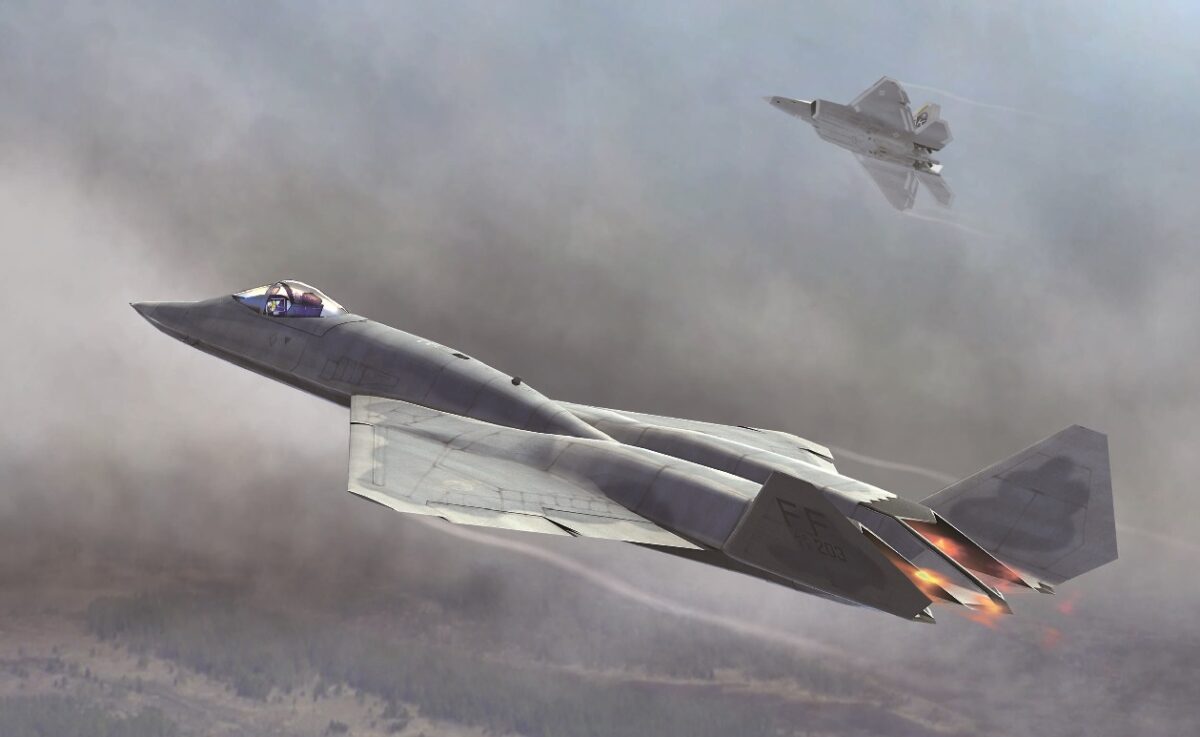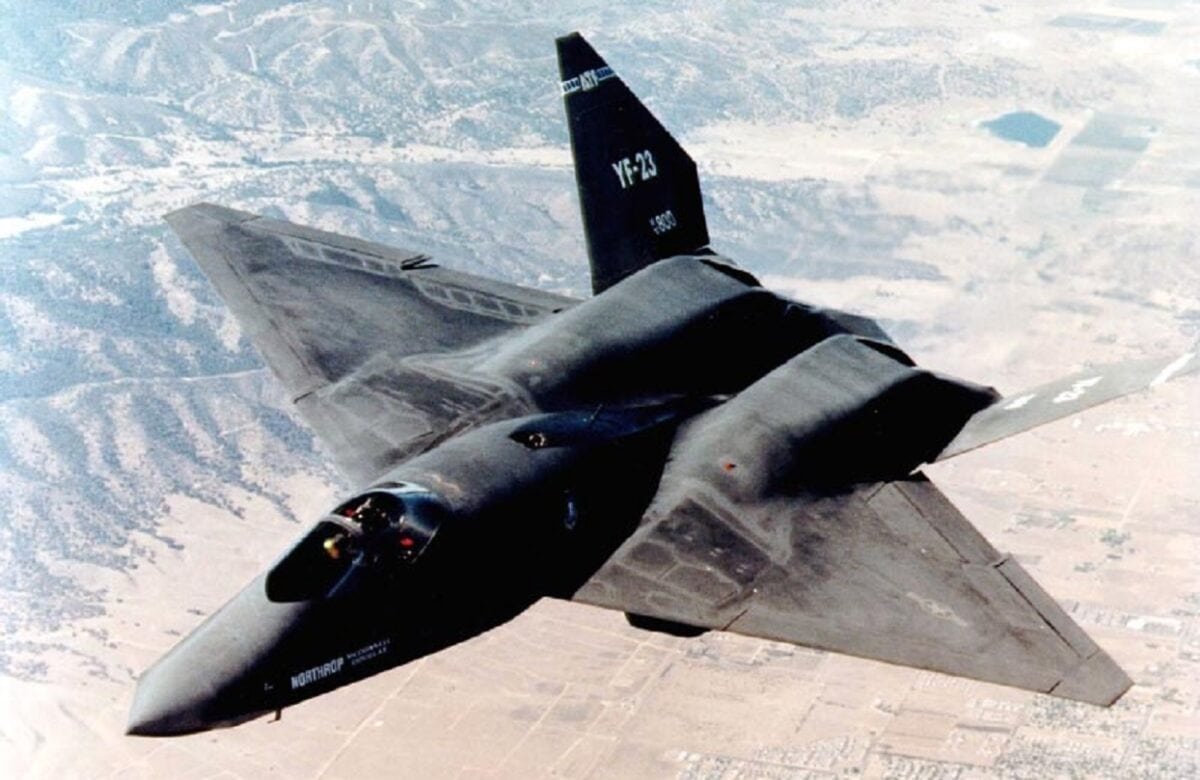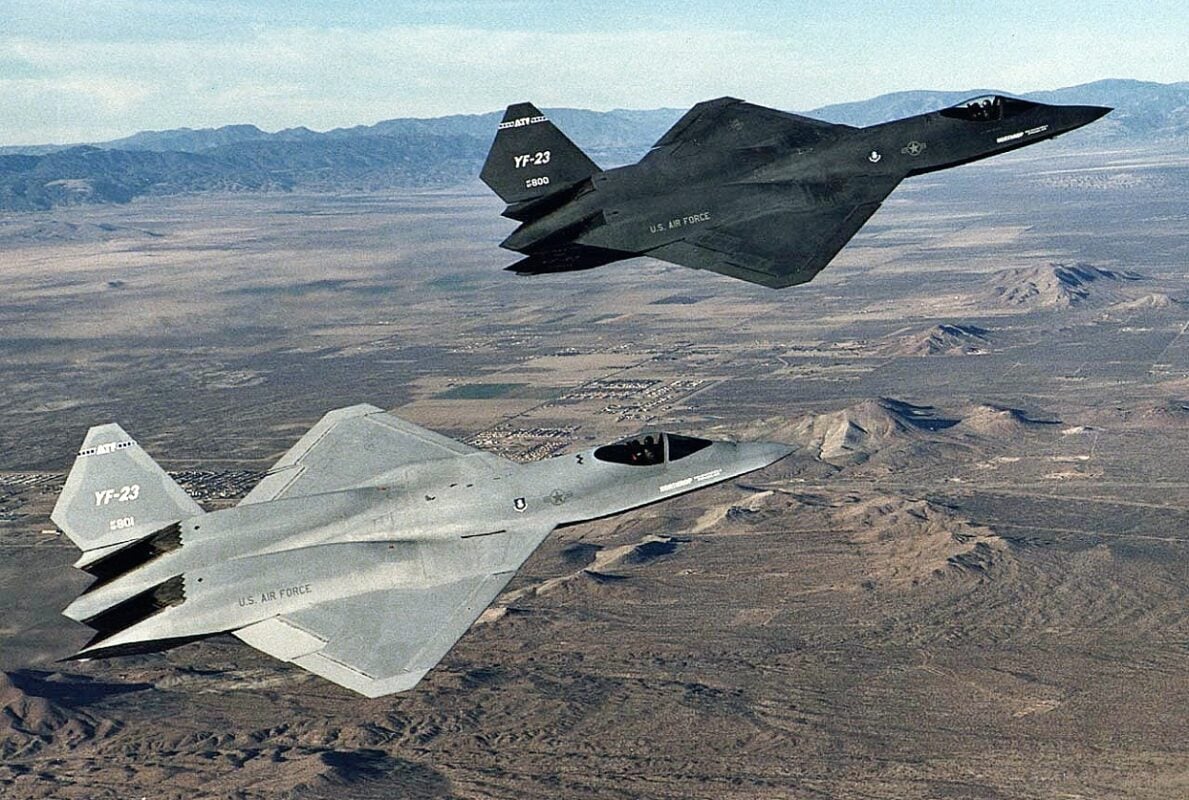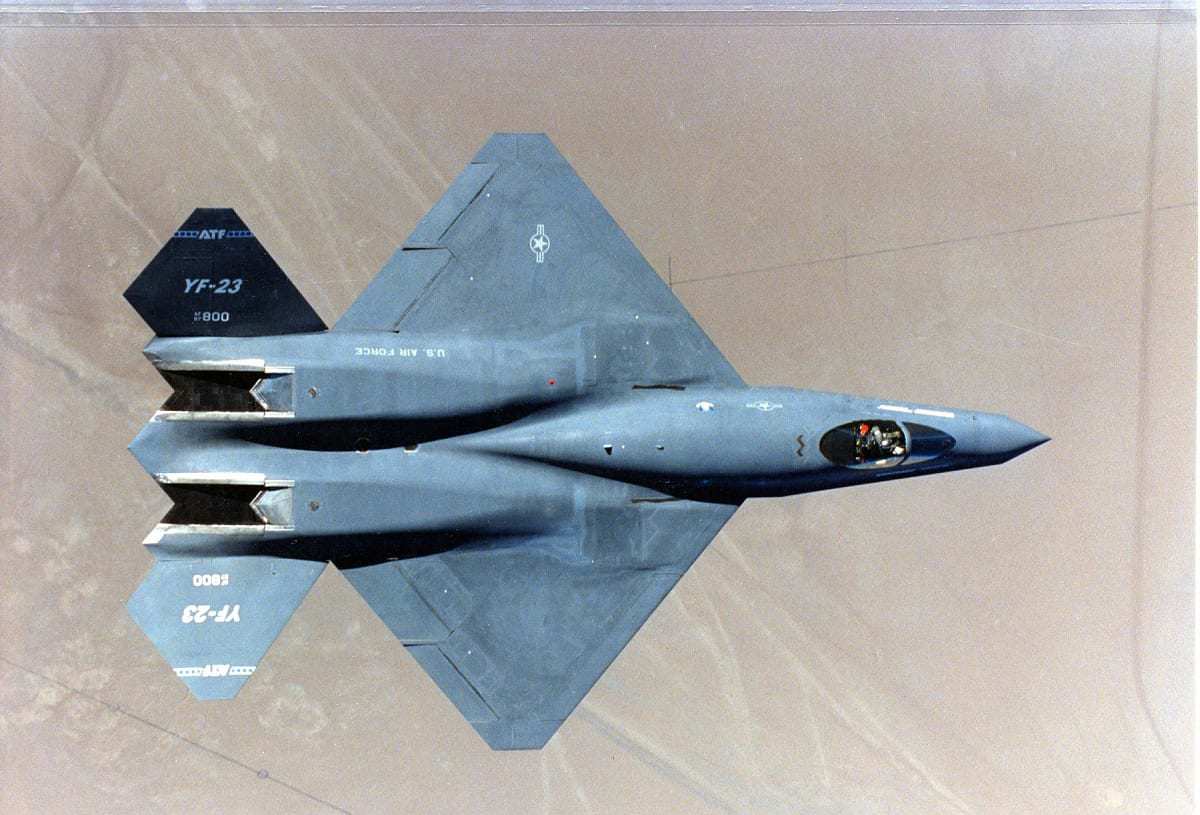YF-23 – The Stealth Fighter The Air Force Could Be Flying Today – In the 1980s, with the Cold War crescendoing, the US Air Force (USAF) began considering the next generation of fighter jets. The USAF was concerned with the appearance of modern Soviet jets. The Soviets, despite being on the verge of collapse, still appeared to outsiders as a formidable great power. And Soviet aerospace design was still as vaunted as ever. New Soviet jets, like the Su-27 and the MiG-29 – which were created to answer America’s fourth-generation F-15 and F-16 – were particularly problematic to US war planners.
YF-23 and Stealth to Forefront
Anticipating the future of air battle, the USAF had some novel ideas for their next batch of fighters. First, they wanted their next-generation aircraft to incorporate stealth technology. The F-117 and B-2, already under production, incorporated stealth. But there was still no fighter jet with stealth abilities (The F-117 was given the ‘F’ designation for the sake of appeal, but was truly an ‘Attack’ aircraft, more worthy of the ‘A’ designation). Second, the new jet was to have “supercruise” ability, which is the ability to achieve and maintain supersonic speed without engaging afterburners. Supercruise would enable a fighter to catch enemy fighters while leaving enough fuel for Air Combat Maneuvers (ACM), or dogfighting.
In 1986, American weapons developers Northrop and Lockheed squared off to compete for the lucrative, prestigious contract. The contract winner, for the program then known as the Advanced Tactical Fighter (ATF), was expected to deliver 750 or so cutting-edge (expensive) fifth-generation fighters to the USAF.
Lockheed won the contract, of course, with their entry – the YF-22, the prototype of the F-22 Raptor. Northrop’s losing bid, the YF-23, has mostly been forgotten. But it was a remarkable machine, held back more from the political environment than any sort of performance deficiency.
The YF-23 Was Unique
Like something from a science-fiction thriller, the jet featured a distinct trapezoidal wing, pushed-forward cockpit, drooping duckbill-shaped nose, and V-shaped tail.
Only two YF-23s were ever built. The first was nicknamed Black Widow II, and incorporated two Pratt & Whitney engines that enabled supercruise at Mach 1.43. For the second, YF-23, nicknamed Grey Ghost, Northrop dropped in a General Electric YF120 engine. The GE-propelled Grey Ghost exceeded the Black Widow’s supercruise speed – and the YF-22’s – hitting Mach 1.6.
The YF-22 was more manueverable than the YF-23, undoubtedly, because the YF-22 was equipped with thrust vectoring technology, whereas the YF-23 relied strictly on conventional maneuvering methods. Thrust vectoring allows the jet to pivot its thrust outlet to improve maneuverability. Northrop omitted thrust vectoring technology because they didn’t want to compromise the jet’s stealth profile. As a result, the YF-23 did have better stealth performance than the YF-22. The YF-23 also outperformed the YF-22 concerning operational range. Despite the YF-23’s impressive performance profile, the Northrop team underperformed, relative to Lockheed, with respect to marketing and reputation.
During the Advanced Tactical Fighter’s testing process, Lockheed fully demonstrated its YF-22’s capabilities. Operating at high angles of attack, firing missiles, and pulling maneuvers at 9Gs, the Lockheed team dazzled Pentagon observers.

YF-23A. Image Credit: Creative Commons.

YF-23A Artist Rendering. Image Credit: Creative Commons.

Image: Creative Commons.

Image: Creative Commons.
Could the Northrop jet have kept up? Probably. But the Northrop team took a more conservative approach to the testing process, failing to put the YF-23 through the same gauntlet of tests,and failing to impress decision makers in the same way. Further, Northrop was in hot water due to cost overruns of the B-2 stealth bomber project – making Lockheed look like a smarter option in the moment (of course, Lockheed’s F-22 project would incur massive cost overruns). Indeed, optics and politics likely doomed the impressive YF-23.
Today, the once-promising fifth-generation fighter is mostly forgotten, save for a few devotees left asking what could have been.
Harrison Kass is a Senior Defense Editor at 19FortyFive. An attorney, pilot, guitarist, and minor pro hockey player, he joined the US Air Force as a Pilot Trainee but was medically discharged. Harrison has degrees from Lake Forest College, the University of Oregon School of Law, and New York University’s Graduate School of Arts & Science. He lives in Oregon and regularly listens to Dokken.

